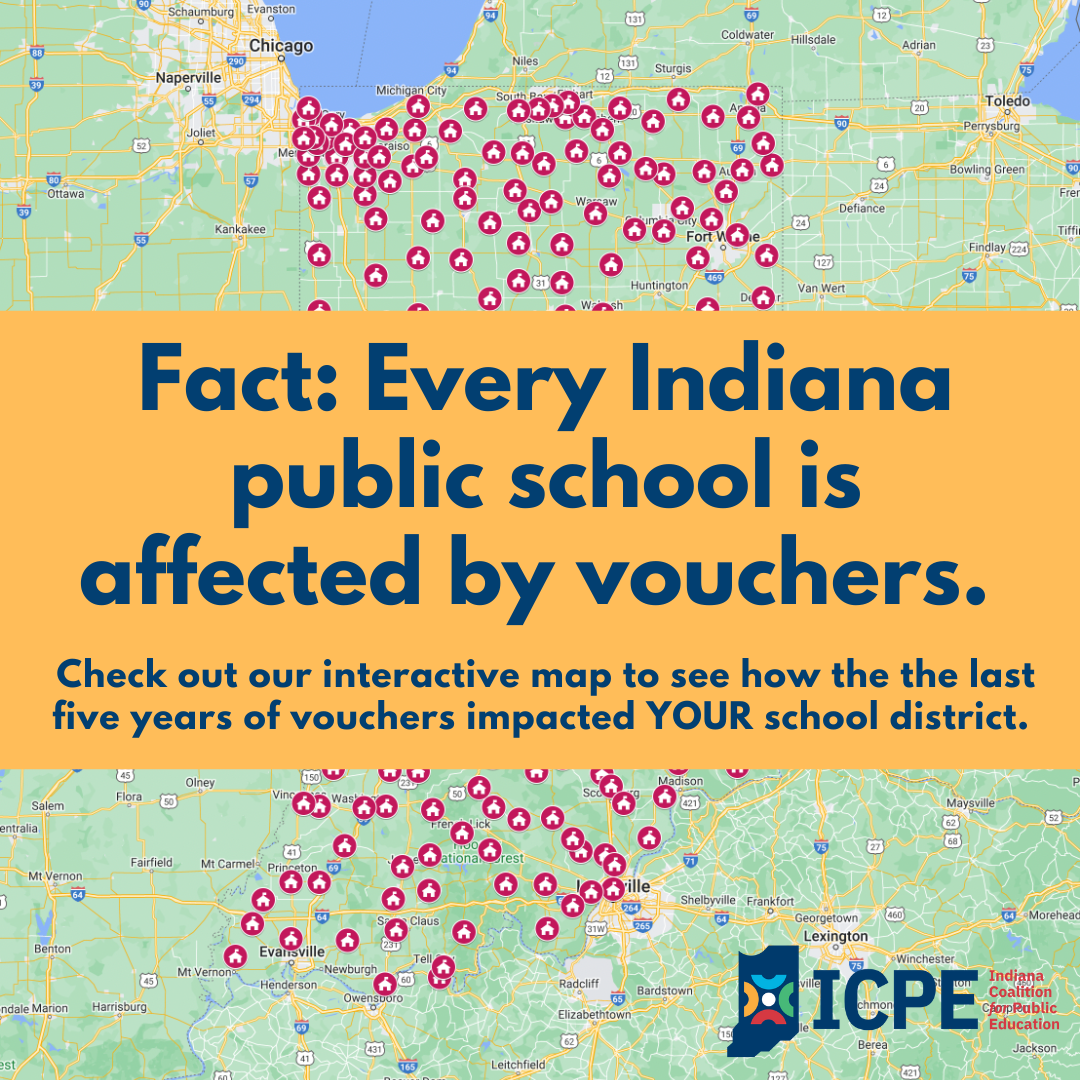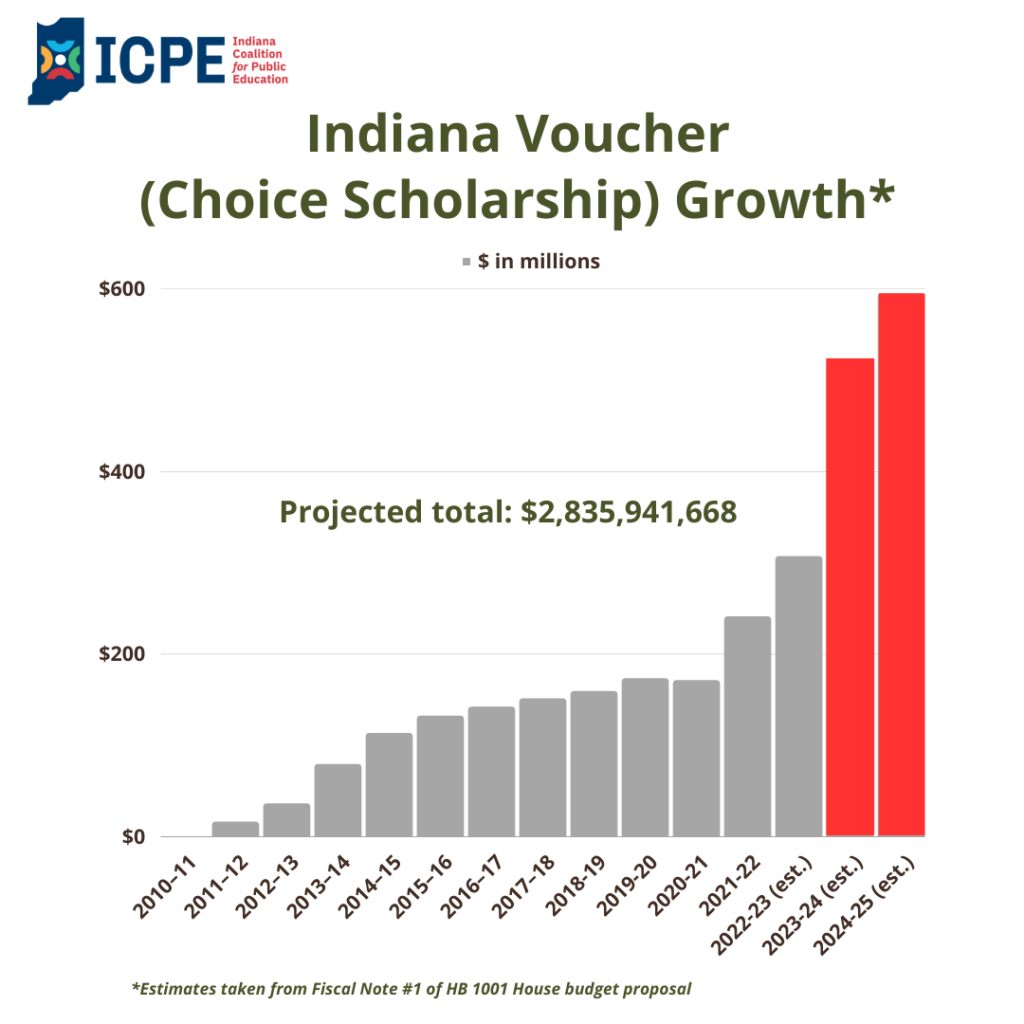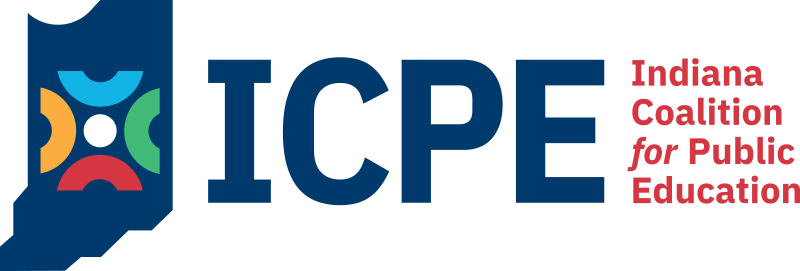Five years of vouchers – mapped by district

Every Indiana public school is losing money because of vouchers.
Even if no students leave your school district to use a voucher, even if you don’t have any voucher-accepting schools in your small or rural school district, your school district still loses money due to vouchers. Remember our “leaky bucket” example? Even if the “bucket” of education funding dollars increases, that money is being diverted in multiple directions because Indiana now funds more than one education system. When money goes to virtual charter schools that defraud the state or when a cumulative $1.4 billion goes to vouchers, that’s money that doesn’t go to public schools or improve teacher pay.
We owe a great debt of gratitude to Dr. Phil Downs, former superintendent of Southwest Allen County Schools, for compiling the data to show exactly how much revenue Indiana’s public school districts could have had if the voucher policy had not existed over the past five years. This information represents the district share if voucher money was added to the basic (tuition support) grant. In economics lingo, it’s the “opportunity cost” of school choice.
What is not included in this map? The projected numbers found in the House-proposed budget. The fiscal note shows that they are proposing $522 million in FY 24 and $596 million in FY 25. The projection in FY 24 represents a 70% increase in voucher funding from current levels. Also we note that 37 % of the new money in this budget would go to private voucher schools, not traditional public schools.

We have seen in Indiana and other states how privatization efforts start small and then grow in every legislative session and become more expensive. For example, vouchers were supposed to save taxpayers money when they were originally proposed, and the expenditure was $15 million in 2011. As the General Assembly continued to expand eligibility, the voucher cost grew to $241 million in 2022 – reaching a cumulative total of $1.4 billion of our tax dollars. According to the fiscal note, 2023 is projected to top out at $307 million for the voucher program.
…vouchers were supposed to save taxpayers money when they were originally proposed, and the expenditure was $15 million in 2011. As the General Assembly continued to expand eligibility, the voucher cost has grown to $241 million in 2022 – reaching a cumulative total of $1.4 billion of our tax dollars.
Originally intended for students in poverty, now a family of 4 with an income of $154,000 can get a voucher. This year’s House-proposed budget takes vouchers to 400% of the federal poverty level which is $220,000 for a family of 4. Vouchers are essentially a government subsidy for private schools.
Further, voucher schools can openly discriminate against families and kids, don’t have to show us where the money goes, and don’t have to follow most of the laws for transparency and accountability that public schools do.
Your message to legislators should be: stop voucher expansion and support public schools. It doesn’t make sense.
Use this map to see how much your district is losing now, and think about what that could look like if the program doubles, which is what is proposed. If you see a large number of red dots in your part of the state, use the zoom-in (+) function to enlarge the map for your area to find your school district.
Remember that your district’s funding also could be impacted by shifts in enrollment due to the pandemic or the effect of the complexity index.
You can find out more about how vouchers work and read Dr. Downs’ year-by-year analysis of voucher losses at https://drphildowns.com/.
